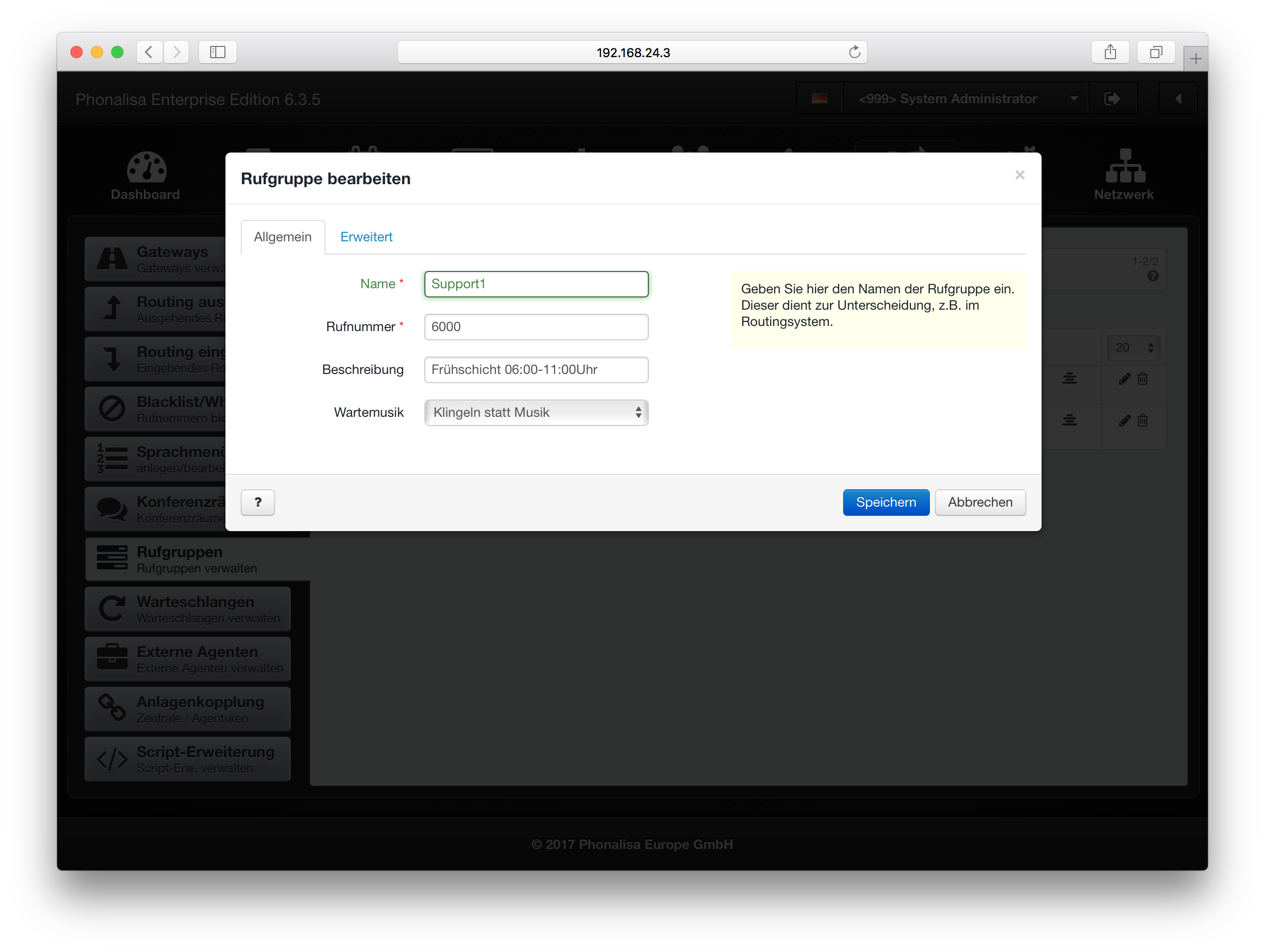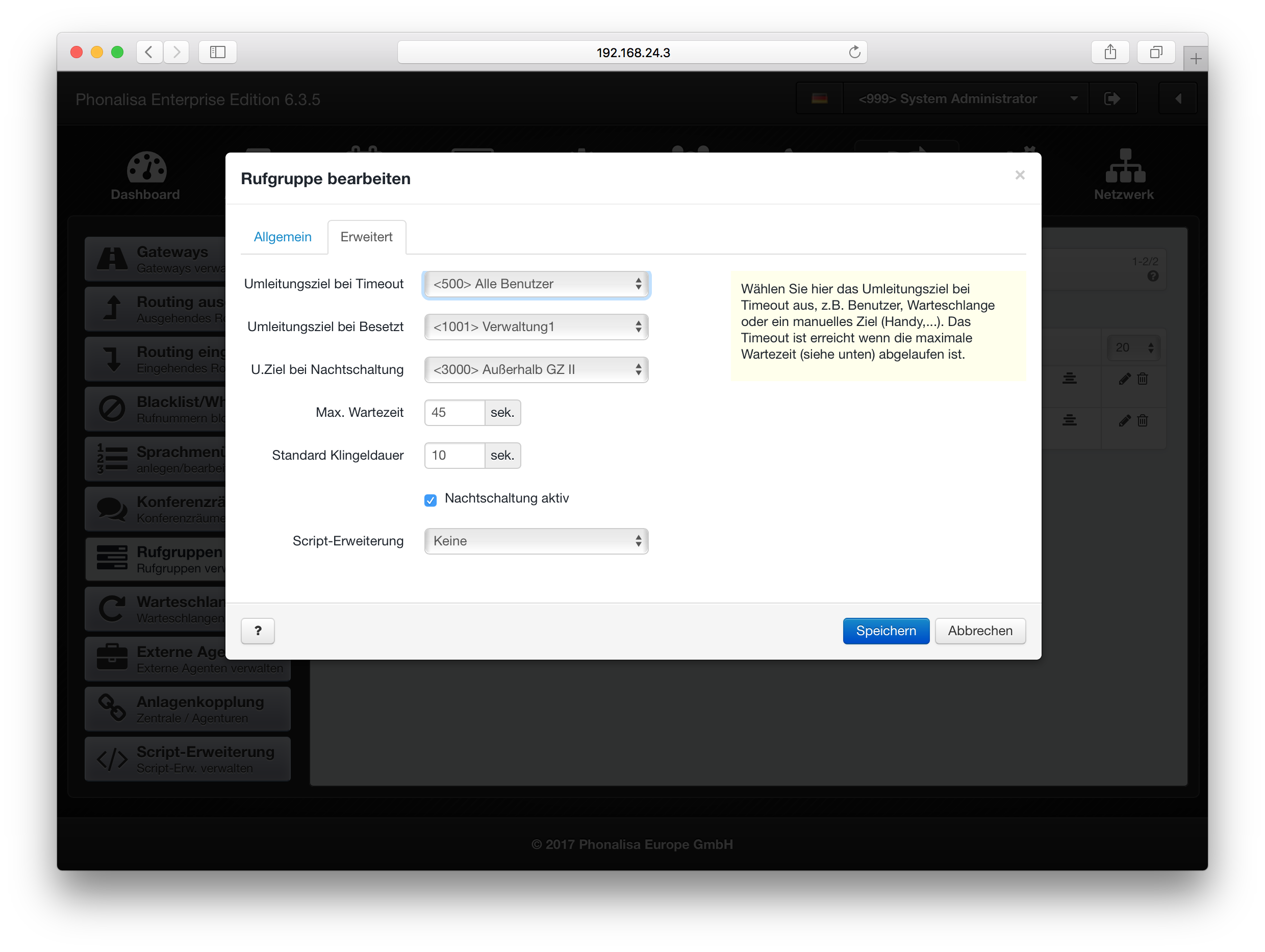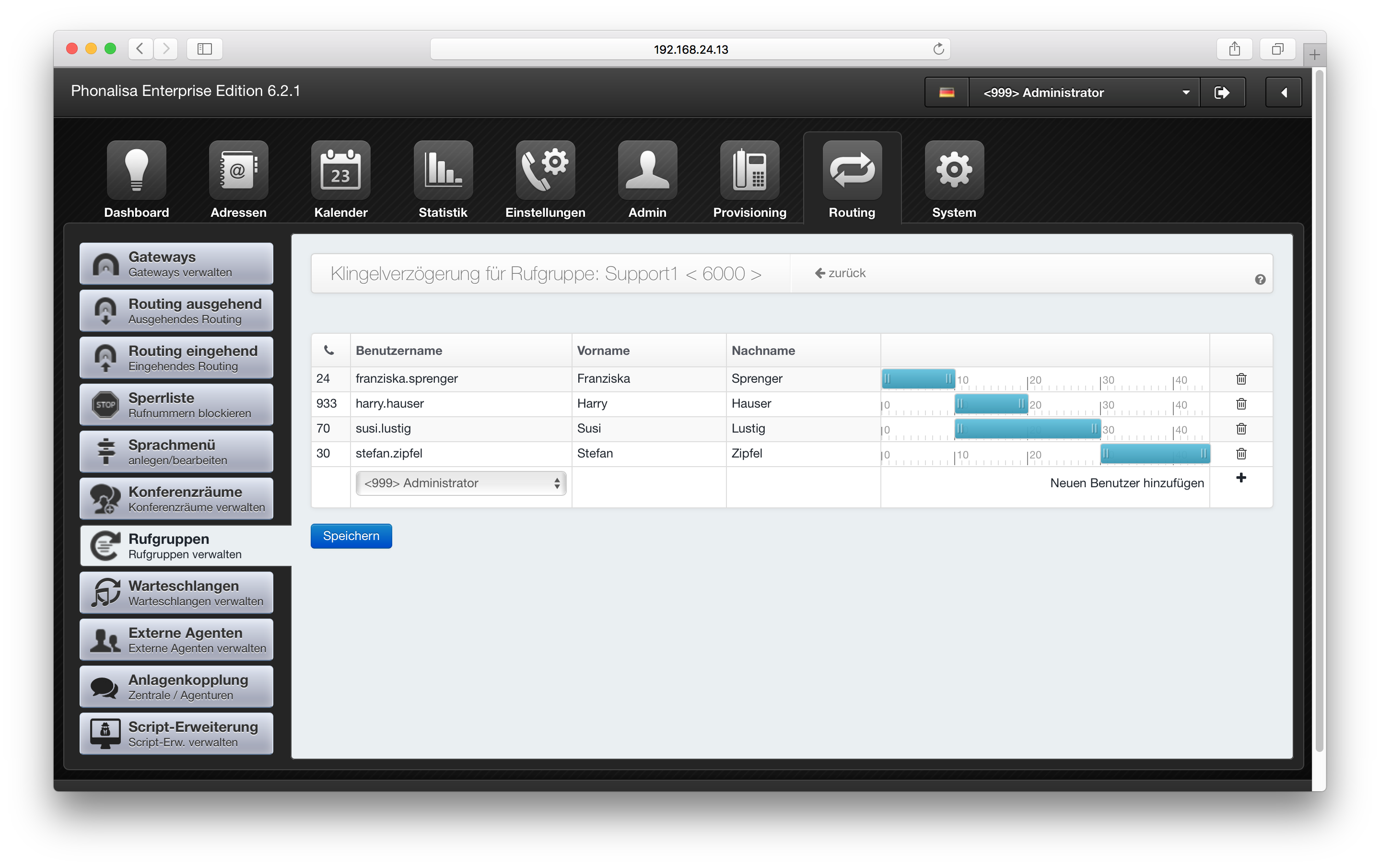The call groups are available from the startup version. They represent the reduced version of a queue – but also offer certain call center functions. These include, for example, the Ring Delay and call diversion for different cases.
General Settings
- You can define an individual name and a description for the call groups.
- The call group can be reached internally and externally via the stored call number.
- The music on hold can also be defined for each call group. Of course you can also select “Ringing instead of music”.
Advanced Settings
- The forwarding cases are manifold: You can define a call forwarding destination for the case “Timeout“, the case “Busy” and for the case “Night answer“.
- Users, groups, call groups, queues, voice menus or a manual destination can be selected as destination (e.g. a mobile phone number)
- The maximum waiting time is the time in seconds that elapses before the call is dropped, redirected to the timeout call forwarding or the central drop point is used..
- The default ring duration is a value in seconds and refers to the bars of the ring delay..
- Script extensions can also be stored for call groups.
User and ring delay of the call groups
- Users can be easily selected and added from the drop-down box.
- The bars of the Ring Delay can be moved by “Drag&Drop“. This allows you to create any call distribution and let any phone ring for as long as you like.



